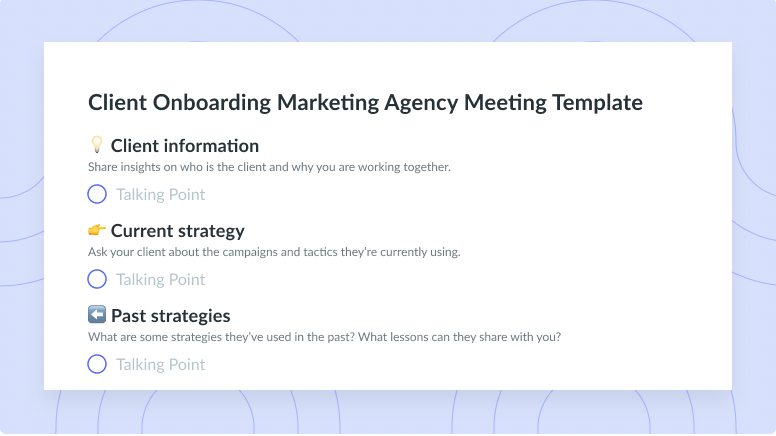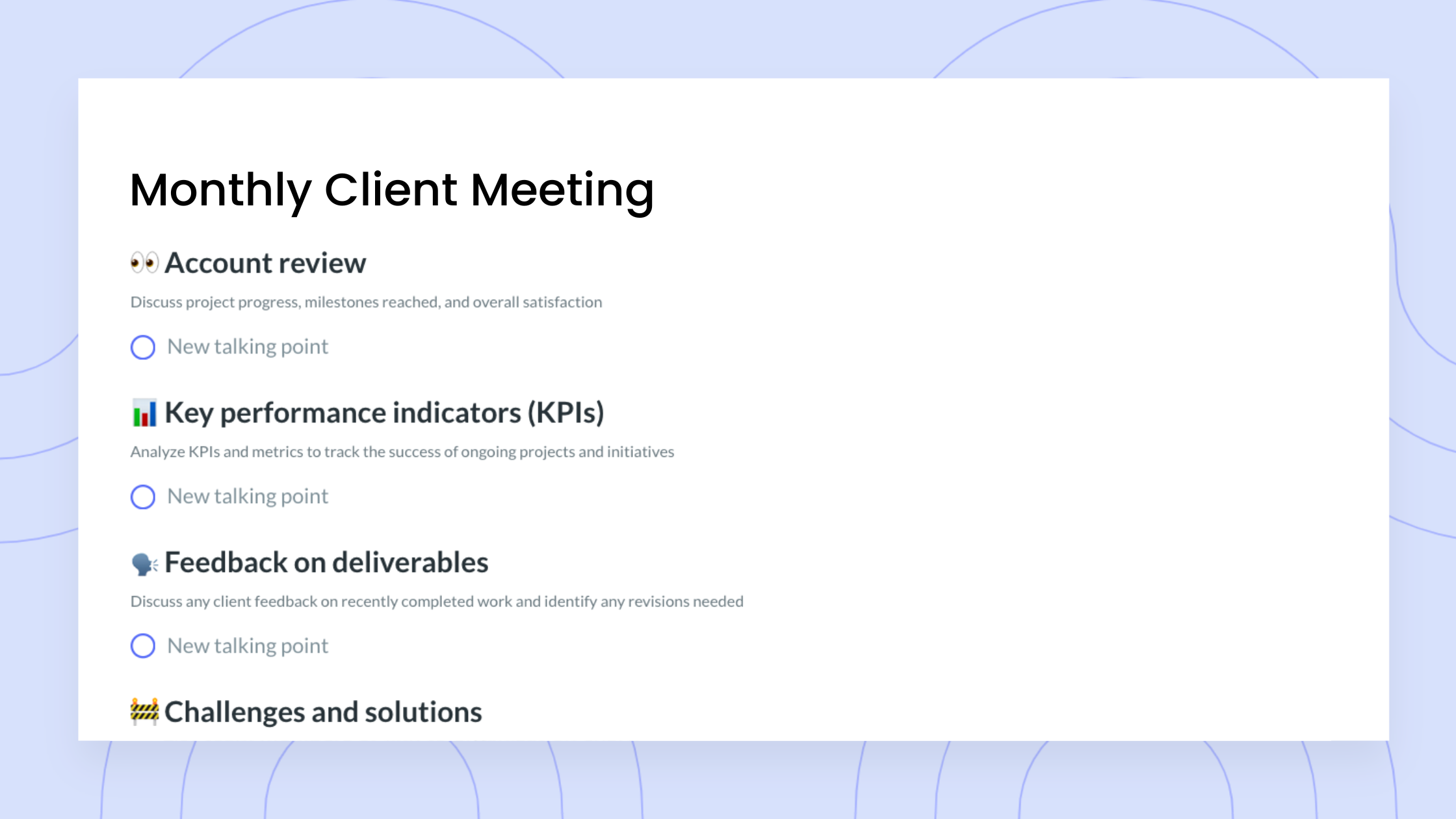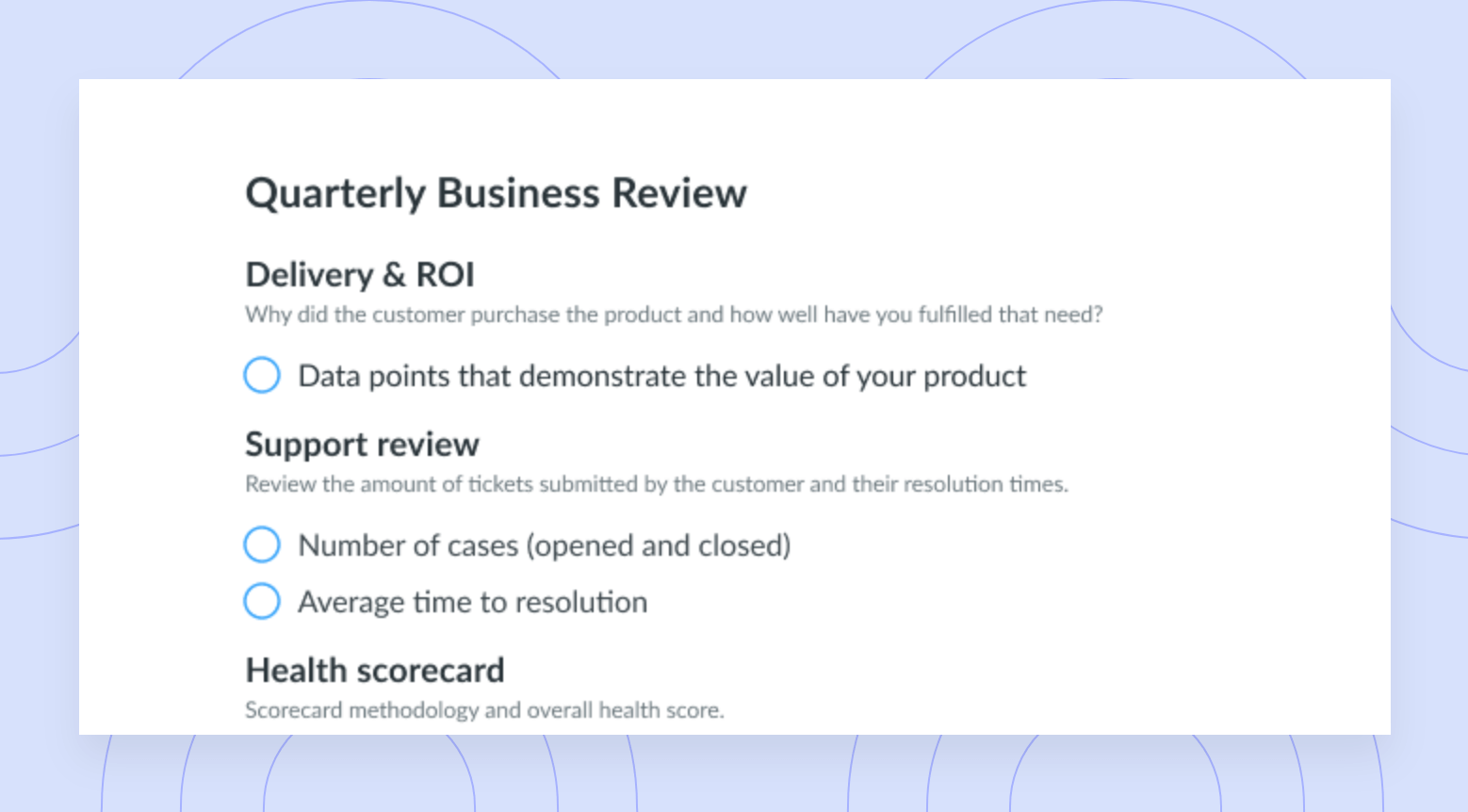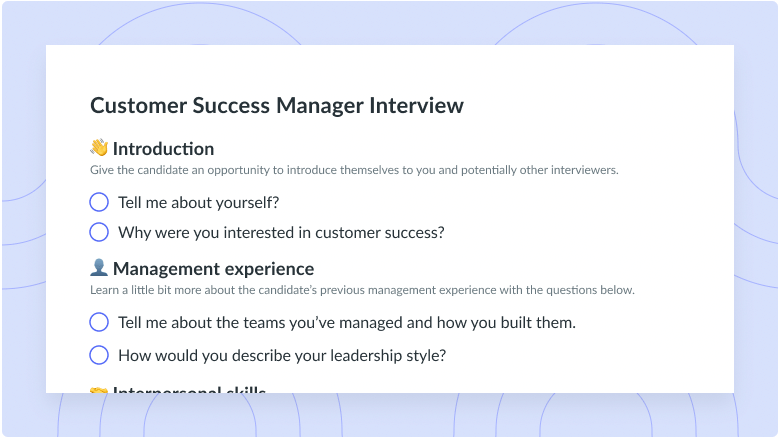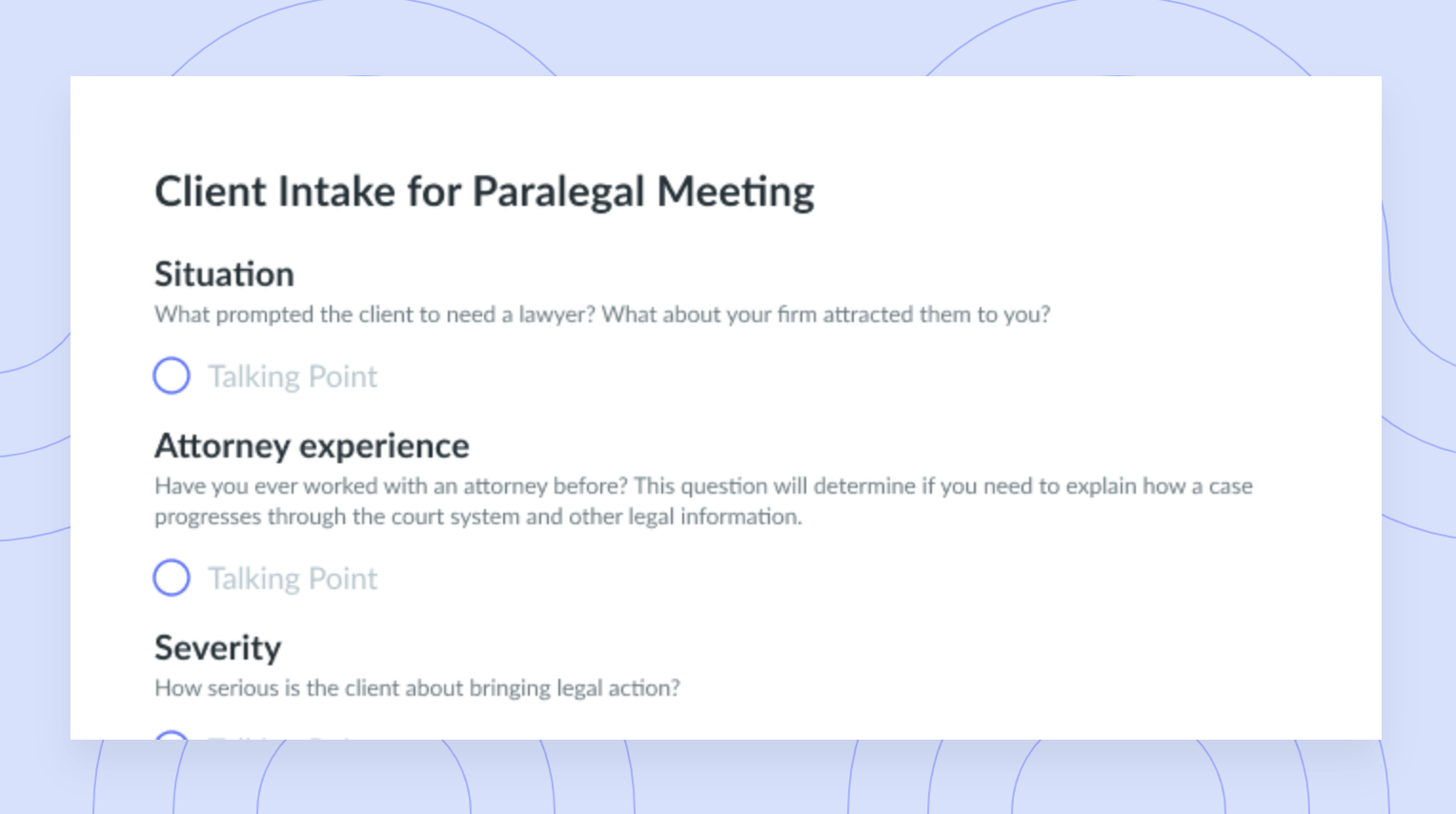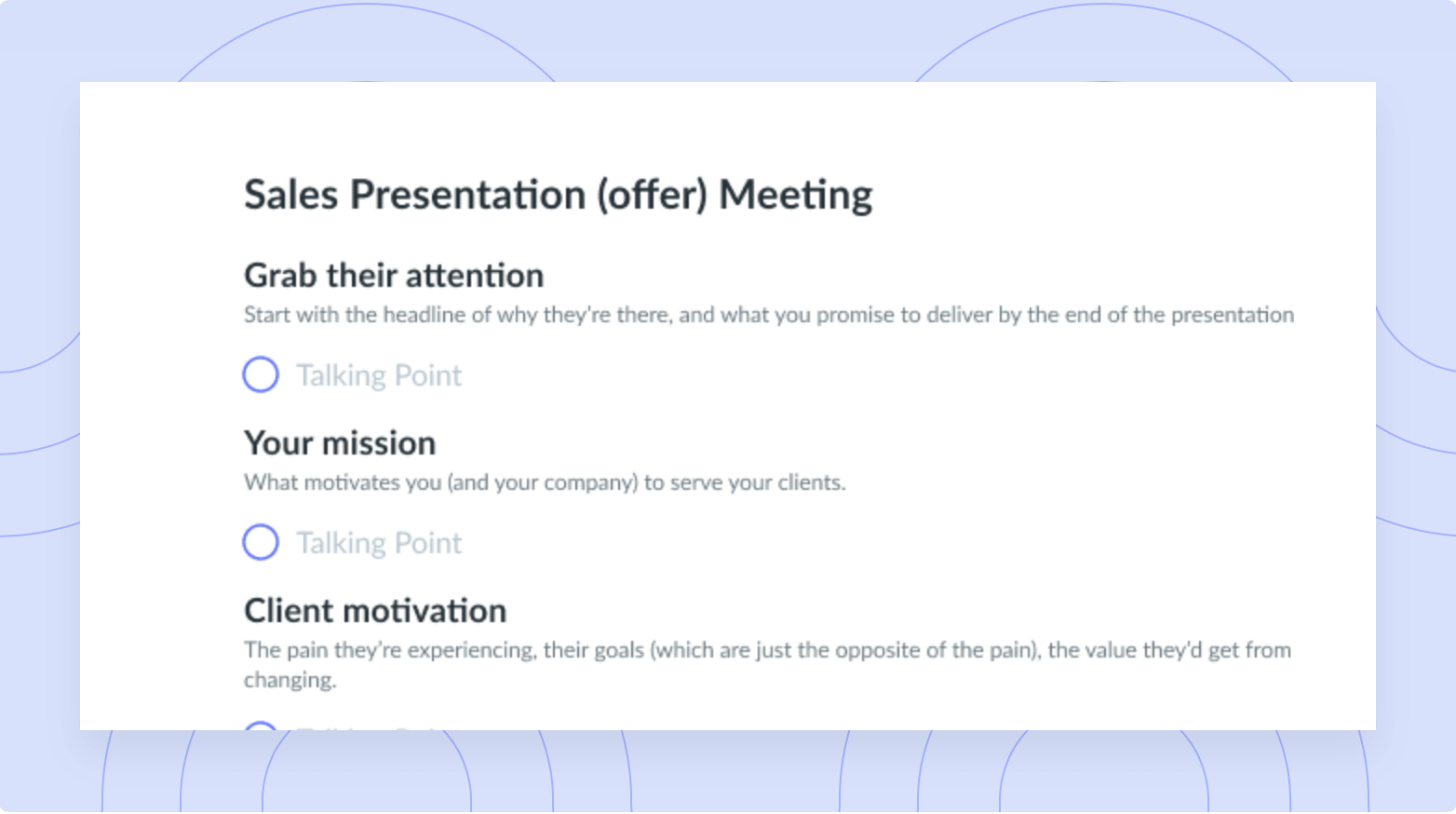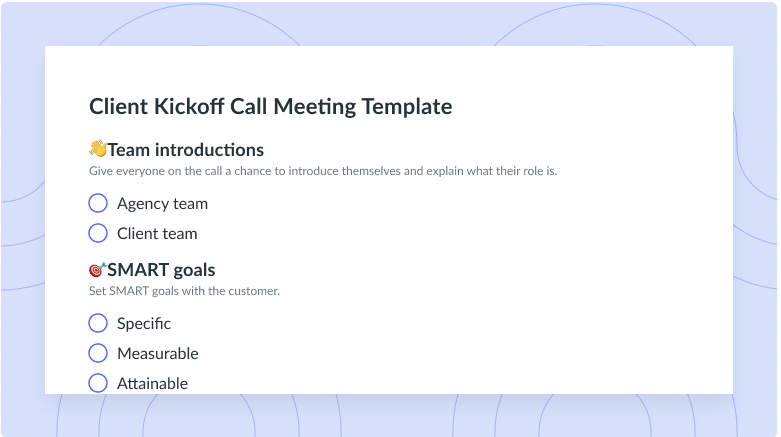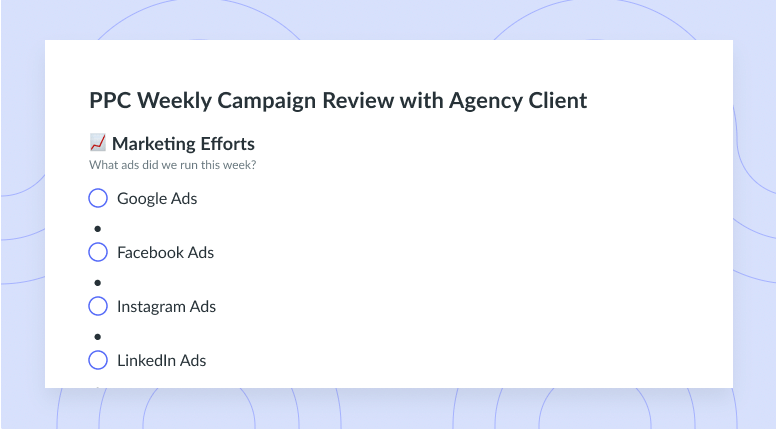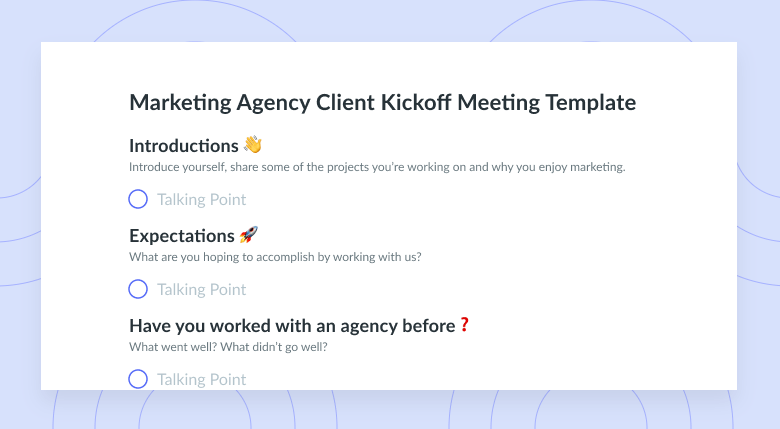The Role of a Client Relations Manager
A client relations manager plays an important role in an organization. Learn everything to know about the job and its responsibilities.
If you work on a client-facing or customer-facing team, you likely understand the value of client relationships. A client relationships manager (or client relations manager) helps build relationships with clients – and, just as importantly, maintain them. Someone in this role works with the sales team and other internal teams to keep clients happy and projects running smoothly.
But what, exactly, is in a client relations manager’s job description? Here, you’ll find the answers and learn why client relationships matter – and how you can improve your client communication.
- Importance of client relationships
- 5 elements of client communication
- Required skills for a client relations manager
- How to improve client communication
Importance of client relationships
Client communication is any conversation – phone calls, email, Slack if you’re close like that – between an organization and its clients. The “client” is the person or organization you’re serving – you’ll use “customer relationship manager” instead if you offer products.
Client relationships are a big part of building trust at work. When the client has a point of contact (the client relations manager) for your organization, your relationship can blossom through open and honest conversation.

Run delightful meetings
Increase meeting engagement and productivity with a collaborative agenda that the whole team can contribute to. Try using a tool like Fellow!

5 elements of client communication
Here are the five elements of client communication.
1Honesty
Transparency at work is how you get honesty and build trust, so to have good communication, you should be truthful with your clients. Be honest about what you can offer and how you’ll help them achieve their goals. The more familiar a client relationship manager is with their organization’s products and services, the more honest their communication.
2Adaptability
Life is full of surprises, so you should be able to adapt your communication to both high-stress and low-stress situations. For example, imagine your client cancels an in-person meeting last minute because they can’t get to your office. You should be able to quickly pivot and offer alternatives such as a conference call or a video chat. When you keep a steady stream of communication no matter what comes your way, you show the client you’re committed.
3Empathy
Being able to see things from someone else’s perspective can go a long way toward reaching peak client satisfaction. When you sprinkle empathy into your communication, you show people that you genuinely care about them. This empathetic understanding can create a connection on a deeper and more personal level. And that, in turn, can build client loyalty to your organization.
4Self-awareness
When you’re fully aware of how you come off to others, you can communicate more clearly with your clients. This awareness stems from your tone of voice, personality, and body language. It’s also part of how you present and talk about your organization. If you’re confident but transparent about what you can and can’t offer a client, you’ll show self-awareness. That can be a sign you’re willing to grow and learn together.
5Context
If you take the context out of a conversation, the thread of communication can begin to unravel. So client relations managers should always be clear on the background of what they’re discussing with clients. This means plainly expressing the who, what, when, why, where, and how.
Required skills for a client relations manager
Below, you’ll find the skills that client relations managers need.
1Negotiation skills
A client relations manager works on client accounts within an organization – they’re basically the point of contact for the relationship. This means they’ll often act as the liaison between their organization and the client on everything from deadlines to pricing. They’ll have to flex their negotiation skills to make both parties happy and give everyone a good deal.
2Confident communication
When you speak and write confidently, you come across as professional and knowledgeable. This is incredibly important when you’re representing your organization. You want clients to walk away knowing that they’re in good hands, and confident communication is a big part of that.
3Creative thinking
The role of client relations manager overlaps with some sales team roles. This means that, when new sales opportunities arise, the ability to think outside the box is a huge plus for a client relations manager. For example, if your organization is pitching a new client, you should find unique, memorable ways to show that your team can cover their needs.
4Resilience
When working directly with clients in the sales department or any customer-facing role, it’s important to have a thick skin. The sales team faces a lot of rejection, and the word “no” is as common as the word “hello.” It’s an invaluable skill to let rejection roll off you like water off a duck’s back.
5Industry awareness
To maintain an air of self-awareness, you should familiarize yourself with your organization’s industry. This means keeping up with market trends so that you know how your organization compares to its competitors. It’s how you find your strengths and weaknesses, which you can use to present yourself to clients in the best possible way.
How to improve client communication
Now, you know the skills needed for the job and the importance of client communication. But how exactly can you improve your client communication? Read on to find out.
- Train your team members
- Expect and accept feedback
- Make up for any miscommunication
- Stay positive
- Be an expert
- Exceed expectations
1Train your team members
When you train your team members on client communication, you teach them how to represent your organization. And whether or not you manage a client-facing team, there’s always the potential for client interaction. So train all your team members on the five elements of good client communication – you never know when they’ll come in handy.
2Expect and accept feedback
When working with clients, you should be ready for positive or negative feedback and know how to respond to it. If you can really listen to what the client is saying and move with instead of against them, you can build more trust and connection.
Pro Tip: Fellow enables your team to share real-time feedback on meetings, projects, and performance.

3Make up for any miscommunication
When miscommunication happens, you should address it immediately and take accountability for your part in the misunderstanding. This shows clients a willingness to work through moments of confusion. For example, if your scope of work says one date but you keep referencing another, you should correct the slip-up ASAP. Nobody’s perfect, but good communicators can own up to their mistakes and figure out a way forward.
4Stay positive
A positive attitude goes a long way in client relationship management. If you always greet a client with a smile and a warm welcome, they’re more likely to think of your organization as a friendly face. To build upon this human connection, try remembering all the little details the client shares. If a client mentions their kids starting at a new school, ask them how it’s going the next time you see them.
5Be an expert
You should be the expert on your organization. This way, when new, old, or prospective clients have questions, you always have the answers. You should always be on the lookout for learning opportunities so you can always know how to give your clients exactly what they need.
6Exceed expectations
When you go above and beyond for your clients, they’re more likely to come back for more. This is the client relations manager’s job – to truly wow the client. That means embracing cross-functional collaboration and doing whatever it takes to make a lasting impression.
Stay ahead of the curve
A good client relations manager understands the importance of client communication – and makes sure their team members do too. When you master the art of client relations management, you can build relationships that last a long time. And with Fellow, you can keep your client meetings in order with tools that set you up for success. With collaborative meeting agendas, meeting action item tools, and shared digital notepads, Fellow has your back with your clients, your team, and everyone else.





![Client Meeting 101: 6 Tips on How to Plan and Execute [+ Free Templates]](https://fellow.app/wp-content/uploads/2022/06/Client-Meeting.jpg)



